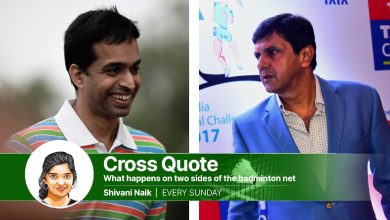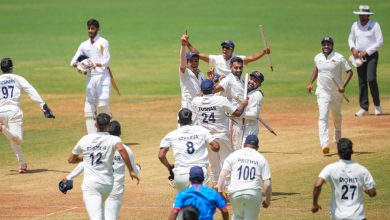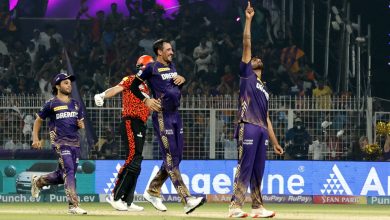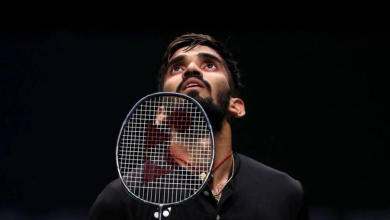Will it be worth watching sports without the 80s kids Messi, Ronaldo, Kohli, Nadal, Djokovic

Sports fans of a certain vintage wfully remember the 80s as the best days of their lives. It was a decade of the GOATS – some were conquering new peaks, some were starting their journeys and some were opening their eyes in the world of limitless possibilities.
In a few years, the final fragile thread that attached the old-timers to those magical 10 years is likely to be snapped. The stalwarts of that extraordinary era, still considered the greats of the games, have long faded away into the background. Now, even those born in the 80s are well over 30, nearing the end of the road.
Tennis, football, cricket are expected to see high-profile retirements. This wouldn’t be another periodic generational shift but a permanent change of sporting skills, psyche, values and goals. A different sports watching experience is on cards as ‘The Millennials’ are about to take over. There is a clear and present danger that those following the sports since the last quarter of the previous century – those old-timers from the 80s – might feel disconnected.
Back in the day, through the 80s, greatness made a habit of being on television all the time. John McEnroe and Bjorn Borg’s unforgettable epic five-setters, Maradona’s hypnotic tango, Mike Tyson’s brutal power, Magic Johnson’s razzle-dazzle, Carl Lewis’s golden run, Flo Jo’s unreal timings, Steffi Graf’s golden slam. An unseen hand seemed to have squeezed time, bunching several once-in-a-lifetime events together.
India had its own 80s stories – starting with the one called 1983. That glorious decade of world record breaking feats of Kapil Dev and Sunil Gavaskar would near its end with Sachin Tendulkar’s debut in 1989. Before that miles away in the US, Pete Sampras was making his professional debut and Michael Jordan was warming up to be the greatest-ever.
Around that time when Jordan, Sampras and Tendulkar were being hyped and were challenging the old order, unknown to the world, a set of very special babies were born around the world. They seized the baton from the super stars and ran away with it – many of these youngsters were faster and reached further.
Roger Federer, Novak Djokovic, Rafael Nadal, Lebron James, Messi, Ronaldo and Virat Kohli were all born in that starry decade – the 80s. Their parents belonged to the Maradona, Gavaskar, Graf generation. They had seen sport rise to prominence, become a career option. They were aware that it handsomely rewarded excellence. Some pushed them to pursue sports, others didn’t stop them from being serious about this non-academic pursuit.
Their kids too had ready role models. Sampras and Tendulkar were the pole stars that guided Djokovic and Kohli. Like the US tennis legend, the record-breaking Serbian champion too had a business-like approach to the game. He too let substance prevail over style and showed robotic precision in tense moments of play. There was also Sampras’s contemporary Goran Ivanisevic, a Croatian, who would become part of the Serb’s core group that travelled with him to all Slams. Roger Federer had a similar arrangement with a player he worshiped as a kid – Sweden’s Stefan Edberg.
Kohli’s association with Tendulkar is well known. He would buy snacks and settle in front of the telly to watch his hero bat. In case Tendulkar would get out chasing a steep target, Kohli couldn’t sleep. He would lay in bed dreaming how he would one day finish those tight India games. When in the middle of a slump, he would call on Tendulkar to mend his game.
At the turn of the century the nature of the sport changed. Rules were changing, new formats were being introduced. The new age players, not necessarily young, had a different approach to the game. The grammar, template, conventions and market demands were changing. The good old principles were being binned.
Case in point has been the recently-concluded World T20. Though he was the biggest draw, Kohli never gave up on the age-old batting principles. There was a bit of old-school in him, and each time he steps on the field, this mosquito of a question of how effective he is, will keep buzzing in his ears. Finishing top-scorer for India in the tournament and the semifinals, winning it against Pakan memorably, will not be a consideration for those simply impatient to see him go.
It’s unlikely that the way Kohli approached Tendulkar to iron his flaws in Tests, a player of this generation would approach him. The chain had broken, the tradition of passing wisdom to the next generation would stop with Kohli. In the days to come new gurus and fresh followers will emerge, they will have new conversations that will be very different from what Gavaskar had with Tendulkar or Tendulkar with Kohli.
Like Kohli, similar questions were being asked about Messi and Ronaldo at the FIFA World Cup. At the end of the first round, the Big Two had scored goals but the aura was lacking. New names beckon.
Cricket is still searching for Kohli’s heir apparent but football and tennis have spotted potential superstars. Erling Haaland and Carlos Alcaraz are the future of their respective sports. A dizzy rush is already there, the future is heady. It’s exciting and worth shifting loyalties.
Haaland, who loves to rush to goalmouth with those loping strides, looking unsatiated with an endless appetite for goals, is what the new generation of fans want to consume. Can Haaland be that GOAT – is the question that footballing minds would love to busy themselves with.
Alcaraz picked two Masters titles and a Slam to race to World No 1. At 19, he is bobbing around just a few inches higher than the Medvedevs and Runes. You suspect it’s that journey of Alcaraz or Haaland towards staking claim on those breezy GOAT pastures, that will keep fans enthralled. There’s nothing like bright new talent to cure that pang of nostalgia, even for those who lived and loved the marvelous 80s.







